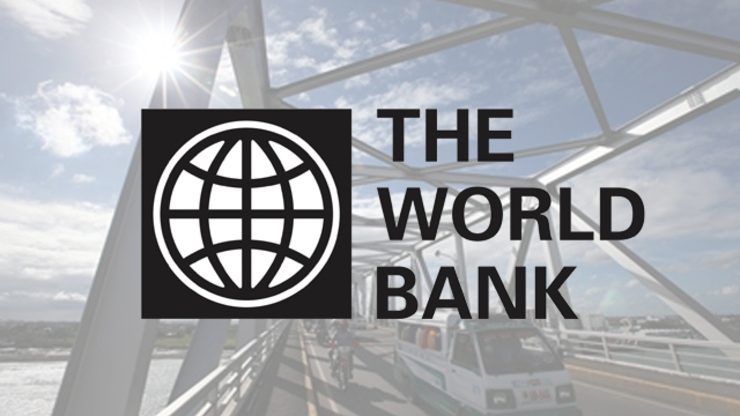SUMMARY
This is AI generated summarization, which may have errors. For context, always refer to the full article.

MANILA, PHILIPPINES – The World Bank revised downward its growth forecasts for the Philippines, given the country’s slow start in the first quarter, weak government spending, and tightening of monetary policy.
Growth projections for the Philippines have been downgraded from 6.6% to 6.4% for 2014 and from 6.9% to 6.7% for 2015, the World Bank said in its updated East Asia Pacific Economic Update released Sunday, October 5.
The Asian Development Bank (ADB) previously lowered it from an earlier estimate of 6.7% to 6.4% for the year, and from 6.7% to 6.4% for 2015, attributed to low government spending, higher inflation, and related monetary tightening dampen activity.
“Strong domestic demand would continue to drive overall growth, but growth will depend heavily on the ability of the government to ramp up spending,” the World Bank said.
Ongoing and recently awarded public-private partnership (PPP) projects equivalent to around 1.5% of gross domestic products (GDP) are also new sources of growth, the World Bank said.
“An acceleration of reconstruction spending can support growth at above 6%,” it added.
Private consumption is also expected to contribute more than half of GDP growth, supported by a strong inflow of remittances and strong consumer confidence, the Washington-based agency said.
Watch outs
But a number of external and domestic factors could pose risks to growth, the World Bank warned.
Policy issues in high-income countries, a difficult adjustment in China’s property market, political tensions in the Middle East and Eastern Europe, and territorial disputes with China are the external risks to watch out for, the report said.
Low government consumption, slow reconstructions spending, and lagging domestic reform, particularly raising tax revenues and social services spending, are the main domestic risks, the World Bank added.
The World Bank said that food supply could remain tight throughout 2014 because of poor harvests due to weather-related disturbances, exacerbated by El Niño.
Strong macroeconomic fundamentals, along with sound fiscal and monetary policies, would continue to support growth in the near term, while further structural reforms would allow the country to sustain growth at above 6% in the medium-term, the World Bank said.
Deeper structural reforms would allow the country to sustain its current high GDP growth rate, achieve more inclusive growth, create more and better jobs, and reduce poverty at a much faster rate would also add to building on the country’s achievement, the World Bank said.
Key structural reforms must also be implemented, such as protecting property rights, promoting more competition, and simplifying regulations, the World Bank added.
The multilateral institutions growth forecasts for the Philippines are below the government’s targets of 6.5% to 7.5% for this year and 7% to 8% for 2015.
But hitting the 2014 economic growth target of 6.5% to 7.5% is still possible for the Philippines, if historical performance will repeat itself, the country’s chief economic planner said on September 30. A 6.9% growth in the second half of 2014 is needed to achieve the lower end of the 6.5% to 7.5% full-year growth target.
“We’re working to achieve the target. We have grown far above 7% in many quarters in the past, so that’s possible this time,” National Economic and Development Authority (NEDA) Director General Arsenio Balisacan said on sidelines of the economic briefing “Philippines: Shaping our Future.”
China, East Asia growth forecasts cut
Meanwhile, the World Bank also trimmed its growth forecasts for developing East Asian economies this year and next, as China’s economic expansion loses momentum and policymakers face tighter global monetary conditions.
Developing countries in East Asia and the Pacific are likely to see a growth of 6.9% this year and in 2015, slower than the 7.1% the bank had forecast in April, it said in an updated report.
China’s economy is seen to grow 7.4% this year and 7.2% next year, compared with 7.6% and 7.5% projected in April as the government addresses financial vulnerabilities and structural constraints. China’s economy expanded 7.7% in 2013.
But the bank’s chief Asia economist Suhdir Shetty said China’s slowdown is unlikely to be “dramatic” enough to have a major impact on the region.
He also said that the link between the giant Chinese economy and the rest of Asia does not only involve demand, which is expected to weaken due to the slowdown.
China’s links also involve investments which could even increase to parts of Asia as Chinese companies venture out of the country, Shetty said.
Developing East Asian countries, excluding China, are expected to grow 4.8% this year and 5.3% in 2015 from 5.2% in 2013.
Growth in Southeast Asia’s 5 biggest economies – Indonesia, Malaysia, Thailand, Vietnam, and the Philippines – is forecast to slow down to 4.5% this year from 5% in 2013, but is likely to pick up and expand 5% next year as demand for exports grow.
“The good news for the ASEAN 5 is that there will be a period of rising demand for their exports,” Shetty said, adding however that these countries must continue to implement structural reforms, invest in infrastructure, and improve their investment climate in order to sustain growth.
Shetty said a key risk for regional economies is a “disorderly” tightening of monetary policy in the United States, Europe, and Japan which would lead to a steep rise in interest rates.
“To be completely frank, these are unchartered waters …. Yes, there is a possibility it will happen in a disorderly fashion and that’s when there could be risks,” he said.
Sharply higher interest rates could lead to a reduction in capital flows and affect countries which are dependent on them to finance their deficits, he said.
Higher rates could hurt the property markets in several countries, he added. – with reports from Agence France-Presse / Rappler.com
Add a comment
How does this make you feel?
There are no comments yet. Add your comment to start the conversation.